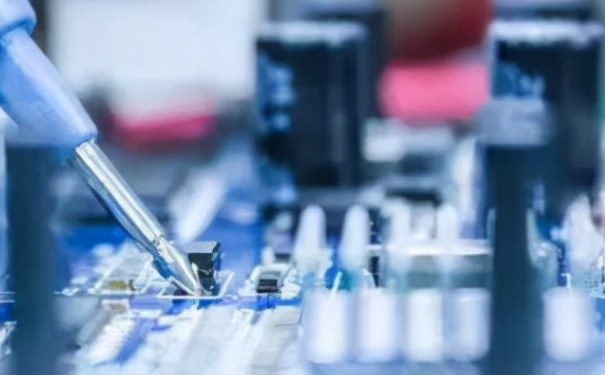What are the metallographic inspection items for common welding of electronic components?
Date:2023-01-10 14:42:44 Views:2177
Because welding is simple, economical, safe and can simplify the manufacturing process of complex parts, welding technology has been widely used in the mechanical manufacturing industry, and many riveted structures have been replaced by weldments in the past. Therefore, the application of welding technology will be more and more extensive, and the metallographic inspection of weldments will be more and more. In order to help you understand in depth, this paper will summarize the relevant knowledge of welding metallographic inspection. If you are interested in the content to be covered in this article, please read on.
The welding metallography mainly inspects the structure of the welded joint. The welded joint is composed of weld metal (hereinafter referred to as weld), base metal heat-affected zone and base metal non-heat-affected zone. Due to the different microstructures of the three zones on the welded joint, metallographic examination shall be carried out separately.

Macrostructure of joint
1 Weld
It is formed by solidification and crystallization of molten metal (it is a liquid metal mixed with molten filler metal and base metal to form a molten pool).
2 Base metal heat-affected zone
Also known as welding tropical influence zone. The part of the base metal on the welding joint that is close to the welding zone is not too wide, but the temperature range is very wide, from the solidus temperature to the temperature of the original state of the base metal, which includes the overheating zone, recrystallization zone and tempering temperature zone. Some structures in this area have undergone phase transformation, so the macrostructure after corrosion is usually dark gray.
3 Base metal not affected by heat
It is located far away from the weld, but adjacent to the heat-affected zone of the base metal. Most of the area still maintains the original processing state of the base metal, and sometimes presents banded structure distribution.
4 Fusion line
A deep black line, namely the fusion line, is common at the junction of the weld and the heat affected zone by using the usual etching method. The fusion line basically exists in the macrostructure of all metal and alloy welded joints, but because the actual width of the fusion line is too narrow, it is generally difficult to clearly display its characteristics at low magnification.
Microstructure of welded joint
1 Weld zone
After the filler and base metal are heated and melted, the weld is solidified and crystallized first and then rapidly cooled to room temperature to form microstructure. Therefore, the weld has two forms of primary structure generated by crystallization and secondary structure generated by solid phase transformation.
2 Fusion zone
The fusion weld consists of mixed melting zone, unmixed melting zone and semi-melting zone. The structure of the fusion zone is very coarse, and the chemical composition and structure are extremely uneven. This area is very narrow, which is the weakest part of the joint, and is also the part most prone to welding cracks and brittle fracture.
3 Base metal heat-affected zone
From the weld to the real base metal (non heat-affected zone) is the heat-affected zone of the base metal, which is the area where the structure and properties change obviously due to different degrees of welding heat effect.
Technical requirements for welded structural members
1. During welding, the weld shall be smooth and free of welding defects such as air holes and slag inclusions, and defects found shall be repaired in time. The weld height is generally close to the steel plate. When intermittent welding is used, the weld length and spacing should be uniform.
2. When the fabricated parts are required to be sealed for continuous welding, it is required that there shall be no air hole and sand hole at the weld.
3. During welding, the weld height shall not be less than the thickness of the base metal (weldment). When welding base metal (weldment) with different thickness, the weld height shall not be less than the thickness of the thinnest base metal (weldment).
The above is the relevant content of the metallographic inspection items of welding organized by the core detection team. I hope it can help you. Our company has a team of professional engineers and industry elites, and has three standardized laboratories with an area of more than 1800 square meters, which can undertake various test projects such as electronic component testing and verification, IC authenticity identification, product design and material selection, failure analysis, functional testing, factory incoming material inspection and tape weaving.




 Weixin Service
Weixin Service

 DouYin
DouYin
 KuaiShou
KuaiShou





















